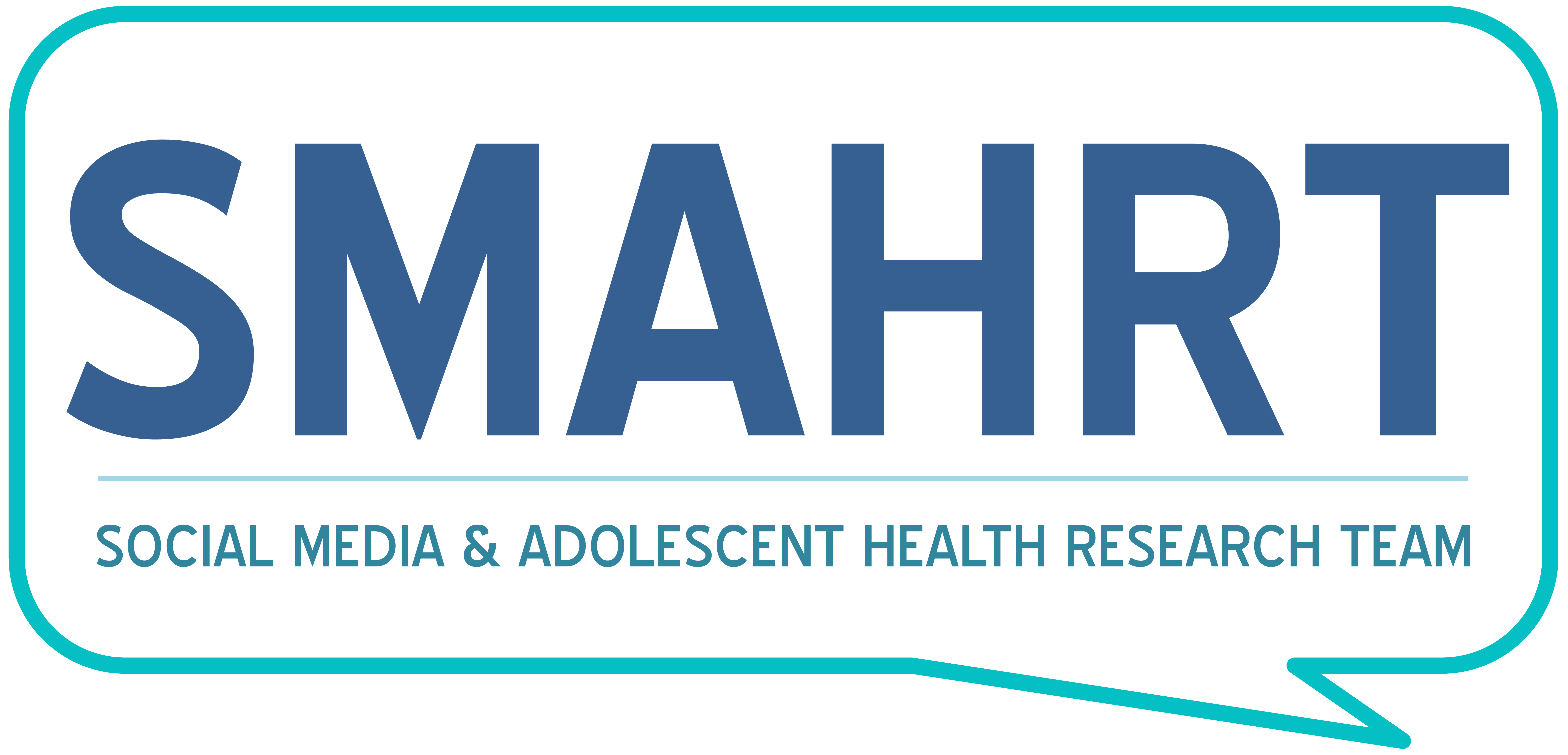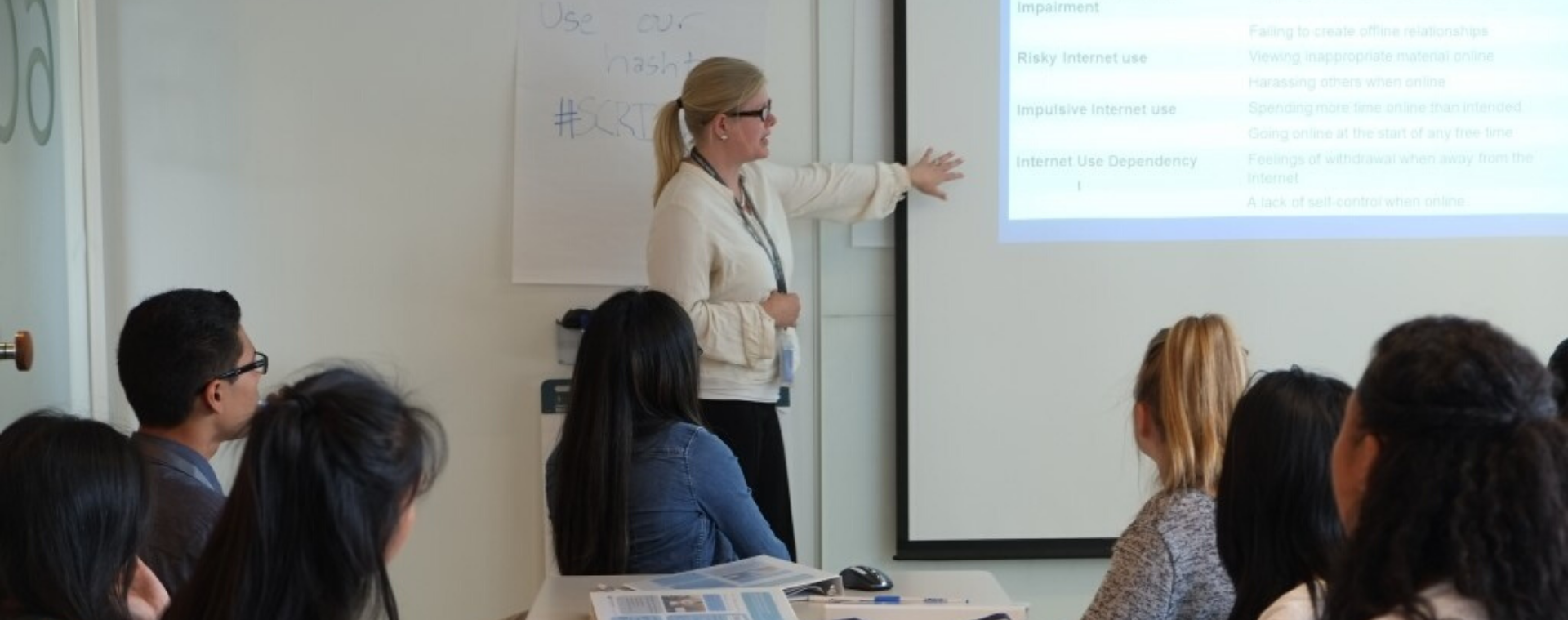Problematic internet usage (PIU) is defined as internet use that is risky, excessive or impulsive in nature leading to adverse life consequences, specifically physical, emotional, social or functional impairment. It is a growing health concern for parents and medical professionals. Dr. Megan Moreno has been leading SMAHRT’s PIU research for over a decade. Over the years, here is what we’ve learned:
Problematic internet usage in U.S. college students: a pilot study (2011):
The study employed an Internet Addiction Test to determine the extent of PIU in college students, alongside a validated Patient Health Questionnaire to measure the prevalence and severity of depression in these students. Results indicated students with more severe cases of depression were approximately 24 times more likely than their peers to demonstrate PIU. Furthermore, the study concluded that, in general, PIU is prevalent on college campuses.
Problematic internet use among older adolescents: A conceptual framework (2013):
This study utilized a Concept Mapping methodology to create a conceptual framework regarding PIU. Through this method, researchers determined seven types of constructs within PIU: internet use dependency, impulsive internet use, risky internet use, social/functional impairment, emotional impairment, physical impairment, and psychological risk factors. The goal of creating this framework was to provide guidance to future PIU research and clinical practice efforts.
Exploring depression and problematic internet use among college females: A multisite study (2015):
Because females are an understudied population for internet use, this study recruited undergraduate females ranging from the ages of 18 to 25 years. Similar to the 2011 study, the participants completed the validated Patient Health Questionnaire to screen for depression, as well as the Problematic and Risky Internet Use Screening Scale (PRIUSS). This study discovered a positive correlation between depression and PIU; in fact, for participants with more intense cases of depression, their relative risk for PIU was eight times more likely than their non-depressed peers.
Problematic internet use and social networking site use among Dutch adolescents (2016):
This study sampled Dutch adolescents to explore the relationship between social networking sites (SNS) and PIU. Within this sample, 11% of Dutch adolescents received scores indicating at-risk for PIU. The risk for PIU increased by 22% with each increasing year in age. Males were more than twice as likely to be at-risk for PIU than their female peers, and lastly, students who posted at least four times a day on an SNS were about five times more likely than those who posted less often.
Problematic Internet Use: A Longitudinal Study Evaluating Prevalence and Predictors (2019):
Following participants throughout their four years of college: this study observed the risk for PIU over time. The PRIUSS was employed to determine who, in the sample of 319 college students, was at risk for PIU. After four years, the study did not identify a specific point in the college timeline that presented a greater risk for PIU, nor did the study indicate a demographic predictor for PIU. The study attributes the general prevalence of PIU to college students’ universal engagement in internet-based technology.
So, what can you do with this information?
Dr. Moreno has assisted in developing a validated PIU screening tool called the Problematic and Risky Internet Use Screening Scale. The PRIUSS was developed using the aforementioned PIU conceptual framework; the initial version consists of 18 items with 3 subscales (social impairment, emotional impairment, and risky impairment). The PRIUSS-3 is a shortened version of this scale; the first subscale refers to social anxiety, the second subscale refers to irritation, anxiety, and withdrawal, and the third subscale refers to the loss of motivation. This tool can be used to assess PIU and take proactive steps to avoid or counteract PIU. The Clinic For Interactive Media and Internet Disorders uses this scale to diagnose PIU.
One preventative strategy proposed by a 2020 study titled Screening for Problematic Internet Use, suggests utilizing the American Academy of Pediatrics’ Family Media Use Plan. This Family Media Use Plan provides families with structural options for internet-usage management.


